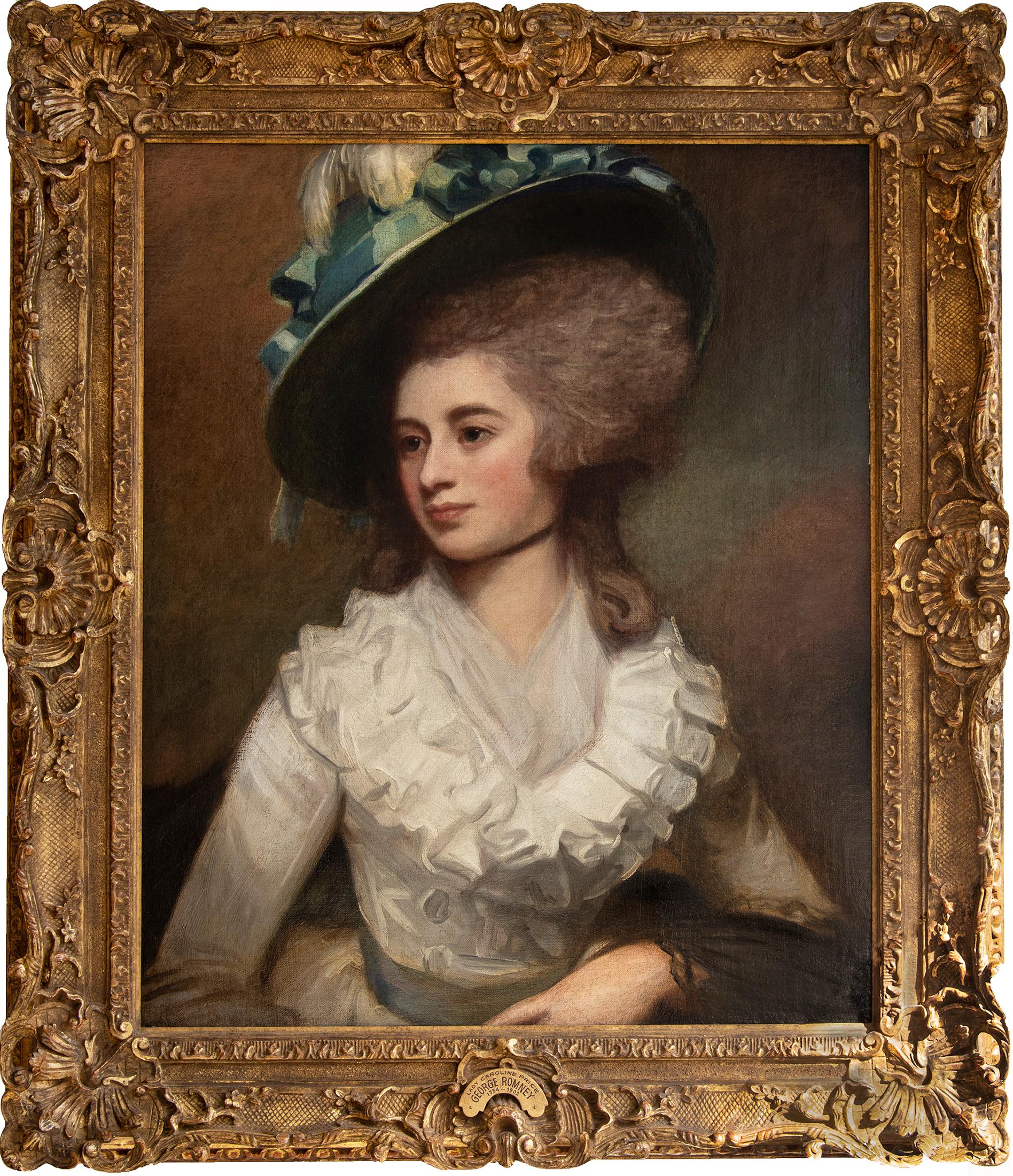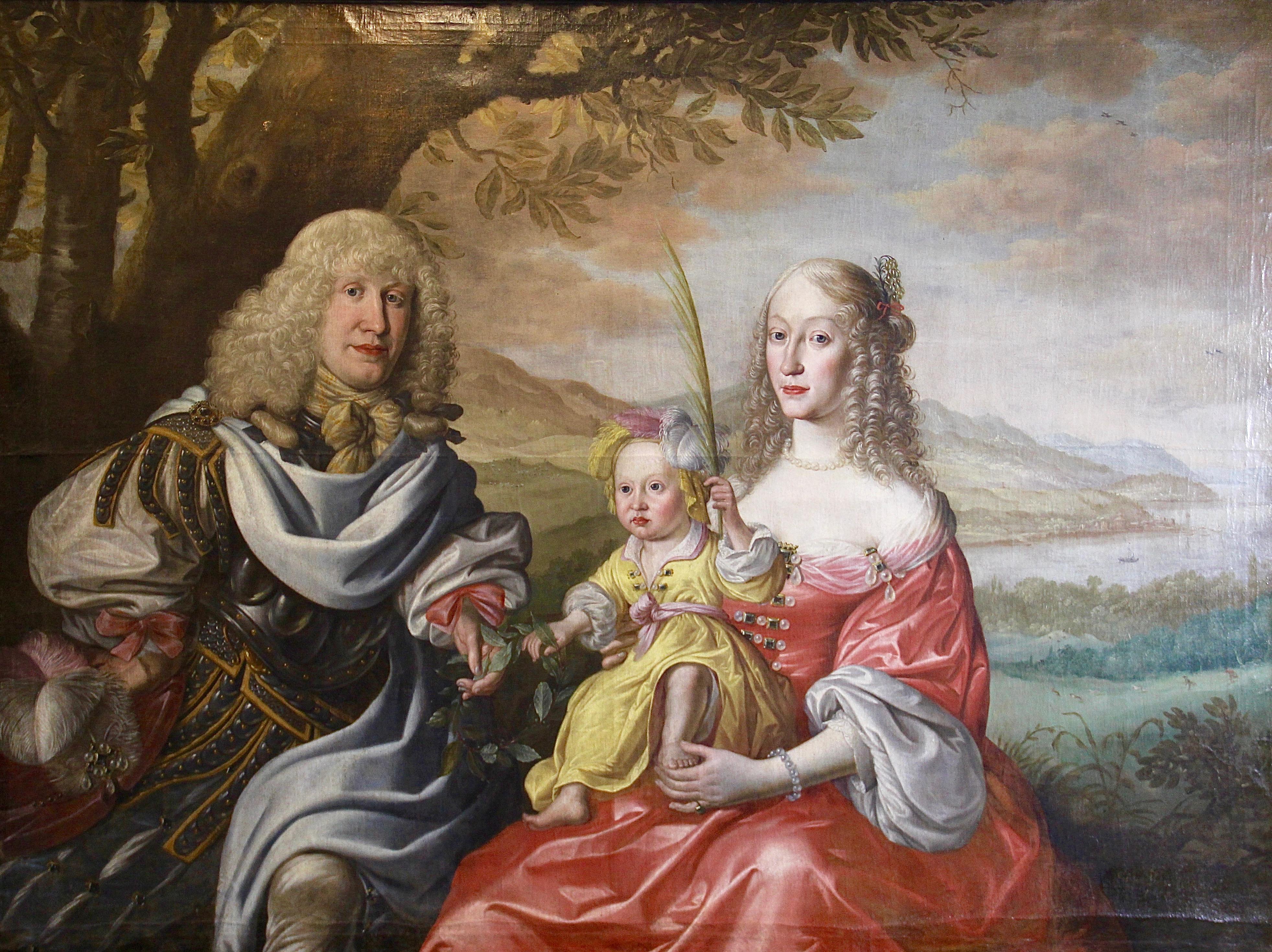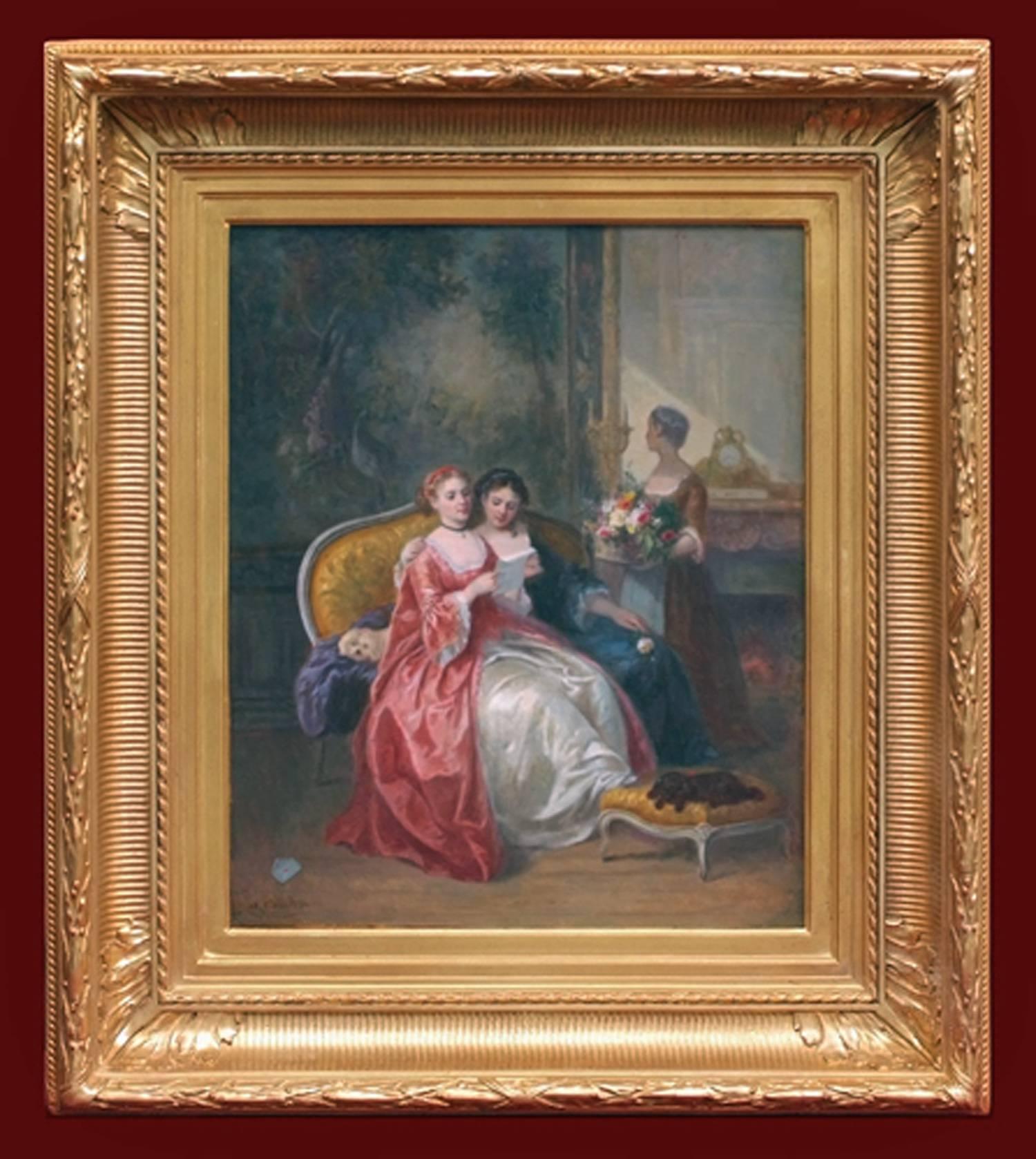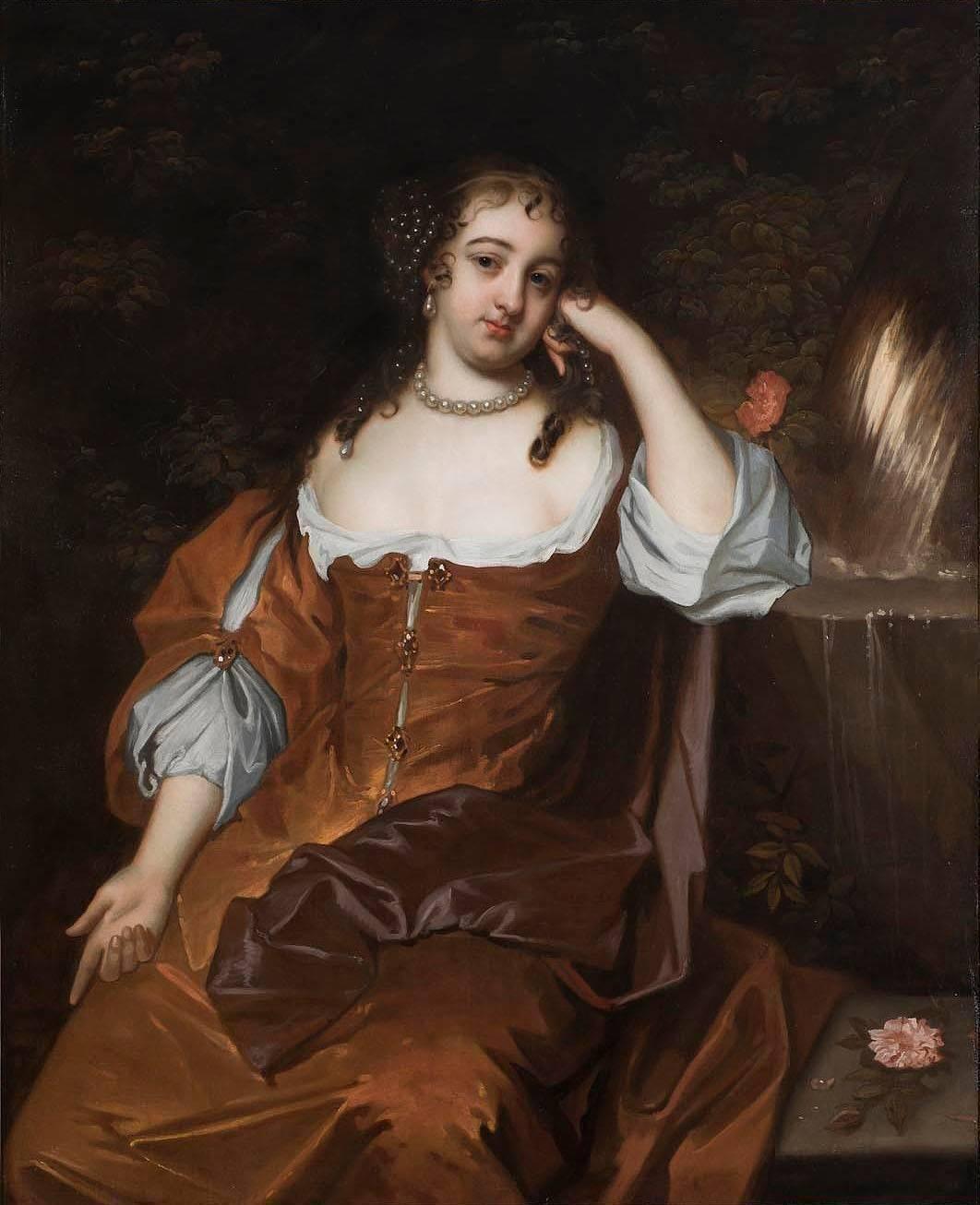Items Similar to Portrait of Lady in Mob Cap - British Old Master 18th century art oil painting
Want more images or videos?
Request additional images or videos from the seller
1 of 14
John Russell (att)Portrait of Lady in Mob Cap - British Old Master 18th century art oil paintingCirca 1790
Circa 1790
About the Item
This charming British Old Master Regency pastel portrait is attributed to John Russell RA. Painted circa 1790 the composition is a blonde woman in pretty mob cap with a blue ribbon. A really lovely image.
Provenance. Oxford estate.
Condition. Oil pastel on paper, 23 inches by 19 inches unframed and in good condition but has line in paper in middle.
Frame. Housed in a fine frame, 30 inches by 26 inches framed and in good condition.
John Russell RA (1745-1806) was an English painter renowned for his portrait work in oils and pastels, and as a writer and teacher of painting techniques. Russell was born in Guildford, Surrey, the son of John Russell Snr., book and print seller and five times mayor of the town; his father was something of an artist, and drew and published two views of Guildford. Russell was educated at the Royal Grammar School, Guildford, and soon showed a strong inclination for art. He trained under Francis Cotes RA (of Cavendish Square, London), one of the pioneers of English pastel painting, and, like Cotes, was an admirer of the pastel drawings of Rosalba Carriera whose methods influenced his technique of "sweetening". At the age of 19 he converted to Methodism, which was the cause of tension with his family and with his teacher; he made no secret of his strong evangelical leanings and would attempt to preach and convert at every opportunity. Russell set up his own studio, in London, in 1767. He made the acquaintance of the notorious Dr. William Dodd, whose portrait he painted in 1768. He was introduced to Selina, Countess of Huntingdon, who unsuccessfully attempted to persuade him to give up painting and attend her Methodist ministers' training college at Trevecca in Wales. On 5 February 1770, he married Hannah Faden, daughter of a Charing Cross print and map seller, whom he had converted. They lived at No. 7 Mortimer Street, Cavendish Square, where he had moved in 1770. Russell's work caused him to travel extensively around Britain. In 1772, he wrote Elements of Painting with Crayons, by which time he had won premiums for his drawings from the Society of Arts in 1759 and 1760, and entered the Royal Academy school of art in 1770, winning its gold medal for figure drawing the same year. He exhibited at the Society of Artists of Great Britain in 1768 and showed 330 works at the Academy between 1769 until and his death. In 1770, Russell painted Methodist minister, George Whitefield (engraved by James Watson) and the future philanthropist, William Wilberforce, then only eleven years old. In 1771, he exhibited a portrait in oils of Charles Wesley at the Royal Academy and, in 1772, painted Selina, Countess of Huntingdon in pastel. This was a symbolic picture, and was lost on its voyage out; but it was engraved, and he later also painted her in oils. Also in that year he was elected an associate of the Royal Academy. The following year, 1773, he painted John Wesley (engraved by Bland). In 1788, after a long wait, Russell was elected a royal academician, in the same year painting a portrait of the naturalist Sir Joseph Banks. In 1789, he was commissioned to portray the royal physician Francis Willis. The results obviously pleased the monarch as, in 1790, he was appointed Crayon (pastel) Painter to King George III, Queen Charlotte, the Prince of Wales (both of whom Russell also painted) and the Duke of York. With such royal patronage, he developed a large and fashionable clientele. Russell was a man of deep religious beliefs, a devout follower of George Whitefield. He began an elaborate introspective diary in John Byrom's shorthand in 1766 and continued it to the time of his death. In it, he recorded his own mental condition and religious exercises, and occasionally information concerning his sitters. Though his religion appears to have become less militant after his marriage, his diary bears witness to his anxiety with regard to his spiritual welfare. Not only would he not work on Sunday, but he would allow no one to enter his painting-room. He was afraid to go out to dinner on account of the loose and blasphemous conversation which he might hear. He was on good terms with Sir Joshua Reynolds, with whom he dined at the academy, the Dilettanti Society, and the Literary Club (now The Club), but he records that on these or other festive occasions he always left early. He was troubled by ill-health for much of his life, and in 1803 became almost deaf following a bout of cholera. He died in Hull in 1806 after contracting typhus. Russell's work can be viewed at many galleries in the UK and around the world, but the largest collection is held by Guildford House Art Gallery in Guildford. Many of his portraits were engraved by, amongst others, Joseph Collyer, Charles Turner, James Heath, Dean, Bartolozzi and Trotter. Russell was interested in astronomy and made, with the assistance of his daughter, a lunar map, which he engraved on two plates which formed a globe showing the visible surface of the Moon – it took twenty years to finish. He also invented an apparatus for exhibiting the phenomena of the Moon, which he called "Selenographia". Russell's large and highly detailed pastel drawing of The Face of the Moon (1793–1797) is "the most faithful early representation of the lunar sphere". Some of his best portraits were of the era's acclaimed scientists, such as his friend William Herschel, who he depicted holding a stellar chart showing his discovery of Uranus. It was Herschel who provided the powerful telescope that Russell used for his painstaking lunar observations. Of his twelve children (of which four died in infancy), William Russell (1780–1870), exhibited portraits at the Royal Academy from 1805 to 1809. The National Portrait Gallery contains a portrait of Judge Sir John Bailey by him. Two of John's daughters, Anne and Jane became artists as well.
- Creator:John Russell (att) (1745 - 1806)
- Creation Year:Circa 1790
- Dimensions:Height: 30 in (76.2 cm)Width: 26 in (66.04 cm)Depth: 2 in (5.08 cm)
- Medium:
- Movement & Style:
- Period:
- Condition:
- Gallery Location:London, GB
- Reference Number:1stDibs: LU853113342212
About the Seller
5.0
Platinum Seller
These expertly vetted sellers are 1stDibs' most experienced sellers and are rated highest by our customers.
1stDibs seller since 2018
402 sales on 1stDibs
Typical response time: 1 hour
- ShippingRetrieving quote...Ships From: London, United Kingdom
- Return PolicyA return for this item may be initiated within 14 days of delivery.
More From This SellerView All
- Portrait of Lady in Silver Dress - Dutch Old Master art portrait oil paintingBy Willem WissingLocated in London, GBThis lovely Dutch Old Master portrait oil painting is attributed to circle of Willem Wissing. Wissing settled in England and emerged as Peter Lely's most important pupil after his de...Category
17th Century Old Masters Portrait Paintings
MaterialsOil
- Portrait of Lady with Garland of Flowers - British 17thC Old Master oil paintingBy Michael DahlLocated in London, GBThis charming 17th century Old Master portrait oil painting is attributed to the circle of Swedish born Michael Dahl who lived and work in England for most of his life. Painted circa...Category
17th Century Old Masters Portrait Paintings
MaterialsOil
- Italian Greyhound and Friends - Italian 17thC Old Master dog art oil paintingBy Francesco FieravinoLocated in London, GBThis stunning Old Master 17th century oil portrait painting is attributed to Francesco Fieravino, an artist famous in his day for still lifes and carpets. This painting which dates t...Category
17th Century Old Masters Animal Paintings
MaterialsCanvas, Oil
- Portrait of Helena Fourment, Ruben's 2nd Wife - Flemish Old Master oil paintingLocated in London, GBThis stunning Old Master 18th century portrait oil painting has previously been attributed to Sir Peter Paul Rubens. Indeed the sitter, Helena Fourment or Hélène Fourment (11 April 1614 – 15 July 1673) was the second wife of Baroque painter Rubens...Category
18th Century Old Masters Portrait Paintings
MaterialsOil
- Portrait of Putti Playing - French 17th century art Old Master oil paintingLocated in London, GBThis stunning French 17th century Old Master oil painting is by Baroque artist Laurent de la Hyre. It was painted circa 1645 and has excellent provenance from Christie's. The painti...Category
17th Century Old Masters Portrait Paintings
MaterialsOil
- Portrait of a Lady with Rose - British art Old Master portrait oil paintingLocated in London, GBThis charming British early 19th century portrait oil painting is attributed to circle of Sir William Etty and is masterfully portrayed with beautiful pre Impressionist impasto. Pain...Category
19th Century Old Masters Portrait Paintings
MaterialsOil
You May Also Like
- Portrait of Gentleman, Thomas Bruce, Earl of Elgin c.1638 Manor House ProvenanceLocated in London, GBTitan Fine Art present this picture which formed part of a historic collection of an English aristocratic family, Lord and Lady Sandys at their magnificent baroque and Regency Grade-...Category
17th Century Old Masters Portrait Paintings
MaterialsOil, Wood Panel
- Portrait of a Lady Diana Cecil, Countess of Elgin c.1638, Manor House ProvenanceLocated in London, GBTitan Fine Art present this picture which formed part of a historic collection of an English aristocratic family, Lord and Lady Sandys at their magnificent baroque and Regency Grade-...Category
17th Century Old Masters Portrait Paintings
MaterialsOil, Wood Panel
- Portrait of Lady Caroline PriceBy George RomneyLocated in Miami, FLDESCRIPTION: Perhaps the best Romney in private hands. If Vogue Magazine existed in the late 18th century, this image of Lady Caroline Price would be ...Category
1970s Old Masters Portrait Paintings
MaterialsCanvas, Oil
- SIMON PETER TILEMANN, Family Portrait, 1658, Old Master. Baroque Rococo PaintingBy Simon Peter TilemannLocated in Berlin, DEExtremely decorative and large oil painting from the 17th century. Restored in places. Signed and dated Simon Peter Tileman 1658 fecit 'lower right Dimensions without frame. From Wikipedia, the free encyclopedia: Simon Peter Tilemann (1601, Lemgo – 1668, Vienna), was a German Baroque painter who was active Bremen, Kassel and Italy. According to Houbraken he first learned to paint flowers and he had a daughter who could paint flowers in watercolors. He was a good landscape painter who spent many years in Italy, but later switched to portrait painting and who painted the portrait of Ferdinand...Category
1650s Old Masters Portrait Paintings
MaterialsCanvas, Oil
- 19th Century Painting Interior and Genre SceneBy Jean Alexandre Rémy CouderLocated in Saint-Ouen, FRCOUDER Alexandre Jean Rémy (1808-1879) Reading on the sofa Oil on canvas signed low left Old original frame gilded with leaves Dim canvas : 47 X 39 cm Di...Category
1860s Old Masters Interior Paintings
MaterialsOil
- Portrait of a Lady, 17th Century Flemish Oil Old MastersBy Jacob HuysmansLocated in London, GBJacob Huysmans Flemish 1633 - 1696 Portrait of a Lady Oil on canvas Image size: 49 x 40 ¼ inches Gilt frame Huysmans was born in Antwerp and came to England during the reign of Charles II where he became one of the fashionable painters of the court.. The diarist Samual Pepys noted the artist as capable of a more exact likeness than Lely. Certainly the diarist records that by August 1664 in the circle of Queen Catherine...Category
17th Century Old Masters Portrait Paintings
MaterialsCanvas, Oil, Acrylic
Recently Viewed
View AllMore Ways To Browse
Art Forms In Antique
Master Of The Die
Antique Old World Art
British 18th
Antique Caps
Literary Art
Antique Portrait 18th
Left Bank Art
Old Antique Religious Art
Antique Portrait Plates
Large 18th Century Painting
Prints Of 18th Century Paintings
18th Century English Painting
Portrait Of An Old Man
Old Globes
Old English 18th Century
Duke Of York
18th Century English Portrait





